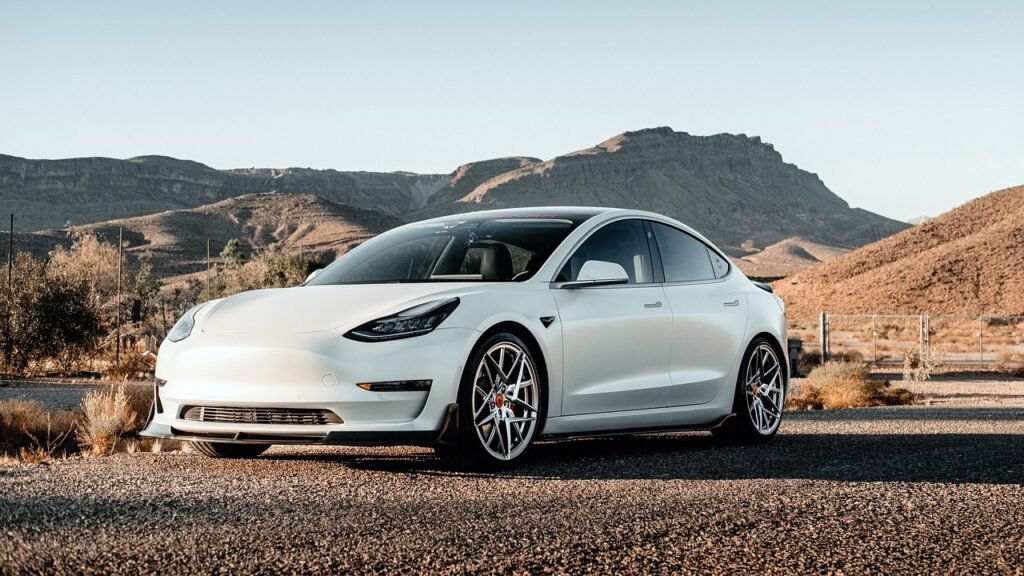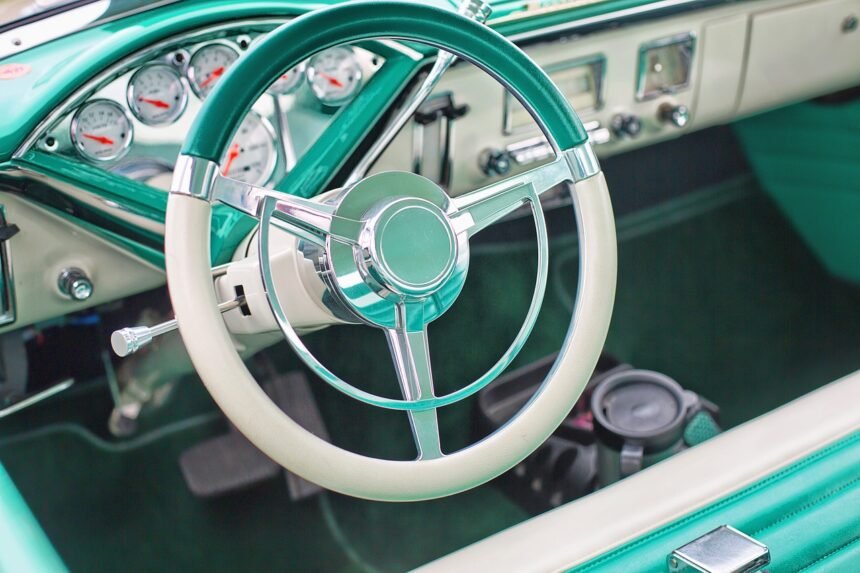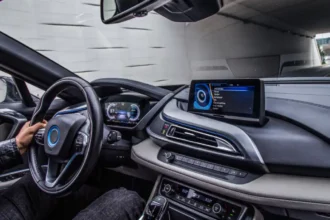Have you ever wondered how Artificial Intelligence (AI) is changing the way we drive, design, and manufacture cars? As technology continues to evolve, AI is rapidly reshaping the auto industry, impacting everything from autonomous vehicles to predictive maintenance. But how exactly is AI transforming the auto industry, and what does it mean for the future of driving?
In this article, we’ll explore the profound ways AI is influencing the automotive world, providing a comprehensive look at how this technology is revolutionizing everything from manufacturing to driving experiences. Get ready to dive into the world where AI meets automotive, and discover how the road ahead is being driven by technology.
The Role of AI in the Auto Industry
AI is no longer a futuristic concept for the auto industry. It’s a reality that is driving innovation in every aspect of the sector, making vehicles smarter, safer, and more efficient. From AI-powered manufacturing systems to fully autonomous vehicles, the influence of AI is undeniable.
Key Ways AI is Transforming the Auto Industry:
- Autonomous Driving
AI has paved the way for the development of self-driving cars. These vehicles use AI algorithms and machine learning to analyze data from various sensors and make real-time decisions on the road. Companies like Tesla, Google, and traditional automakers like Ford are all working to perfect this technology. - AI in Manufacturing
Car production lines are benefiting from AI through automation and robotics. AI-powered robots can perform tasks with precision, speed, and accuracy that human workers could never achieve. This leads to increased efficiency, reduced production time, and fewer errors. - Predictive Maintenance
With AI, vehicles are now equipped with sensors that monitor the car’s health and predict potential mechanical failures before they occur. This minimizes breakdowns, reduces repair costs, and ensures longer vehicle lifespans. - AI-Driven Supply Chain Optimization
AI helps streamline the auto industry’s supply chains by predicting demand, optimizing routes for delivery, and even managing parts inventories automatically. This reduces costs and ensures that production is not delayed due to supply shortages. - Enhanced Driver Assistance Systems (ADAS)
AI has led to the development of advanced driver assistance systems such as lane-keeping assistance, automatic emergency braking, and adaptive cruise control. These systems make driving safer and more convenient, reducing accidents caused by human error.
The Evolution of Autonomous Vehicles: A Reality on the Horizon
Autonomous vehicles, often referred to as self-driving cars, are one of the most talked-about developments in the auto industry. Powered by AI, these cars have the potential to change the way we think about transportation forever. But what exactly makes autonomous vehicles possible?
AI and Machine Learning in Autonomous Cars
At the heart of autonomous vehicles is AI. Through machine learning and deep neural networks, self-driving cars can analyze enormous amounts of data from sensors, cameras, radars, and LIDAR (light detection and ranging). This data helps the car “see” its surroundings, navigate roads, avoid obstacles, and follow traffic laws without human intervention.
Levels of Autonomy
There are five recognized levels of vehicle autonomy, ranging from Level 1, which includes basic driver assistance, to Level 5, which requires no human involvement at all. Today, most vehicles on the road are between Level 2 and Level 3 autonomy, meaning they still require some human intervention but can handle certain driving tasks independently.
Challenges in Full Autonomy
Despite the rapid advancements in AI, there are still challenges to achieving fully autonomous vehicles. Complex driving environments, unpredictable human behavior, and strict regulations present significant obstacles. However, with continued research and development, experts predict that fully autonomous cars could become mainstream within the next decade.
AI-Enhanced Manufacturing: A New Era of Efficiency
The automotive manufacturing process has been revolutionized by AI and robotics. Smart factories now utilize AI-driven robots to enhance the efficiency and precision of car production.
How AI is Used in Car Manufacturing
- Robotic Assembly: AI-powered robots are used to handle delicate tasks, such as welding, painting, and assembling intricate parts. These robots are faster and more accurate than humans, reducing the margin of error.
- Quality Control: AI systems are also used in quality assurance to detect defects that may go unnoticed by human eyes. Using cameras and AI algorithms, manufacturers can ensure that every vehicle meets high standards of quality.
- Predictive Maintenance in Factories: Just like in vehicles, AI can predict when machinery on the production line needs maintenance, preventing costly breakdowns and ensuring continuous production.
Case Study: Tesla’s AI-Driven Factory

Tesla is a prime example of a company using AI to push the boundaries of manufacturing. Its Gigafactories are highly automated, with AI playing a key role in both production efficiency and quality control. By utilizing AI, Tesla has been able to scale production faster and more efficiently than many traditional automakers.
AI and the Future of Car Ownership: Predictive Maintenance
Wouldn’t it be great if your car could tell you when it needs maintenance before something goes wrong? With AI, that future is already here. AI-driven predictive maintenance systems use real-time data to monitor the condition of various car components and predict when they might fail.
Benefits of AI-Powered Predictive Maintenance:
- Reduced Downtime: Predictive maintenance systems alert you to potential issues before they become serious, allowing you to fix them during regular maintenance rather than facing unexpected breakdowns.
- Cost Savings: By catching problems early, AI can help drivers avoid expensive repairs. Replacing a part before it fails is often much cheaper than dealing with a major breakdown.
- Increased Vehicle Lifespan: Cars equipped with AI-driven maintenance systems tend to last longer, as regular maintenance helps keep every component in optimal condition.
How Predictive Maintenance Works
AI systems in modern vehicles are equipped with numerous sensors that collect data on everything from engine temperature to tire pressure. Machine learning algorithms analyze this data to detect patterns that may indicate a future problem, allowing the vehicle to send alerts to the driver or service center.
AI’s Impact on the Customer Experience: Personalization and Safety
AI isn’t just revolutionizing how cars are made or maintained—it’s also transforming the customer experience. Today, AI is being used to make driving more personalized and secure.
AI-Driven Personalization
Car manufacturers are using AI to create personalized driving experiences. For instance, AI can remember your preferred seat position, mirror angles, and even your favorite radio station. Advanced infotainment systems use AI to learn your music preferences, route preferences, and more.
AI-Driven Safety Features
Safety is one of the most important aspects of any vehicle, and AI has dramatically improved vehicle safety in recent years. AI-powered safety systems can predict and prevent accidents in real-time. Features like automatic emergency braking, pedestrian detection, and collision avoidance are all driven by AI algorithms.
Table: AI Transformations in the Auto Industry
| AI Application | Impact on Auto Industry |
|---|---|
| Autonomous Driving | Reduces human error, enables self-driving vehicles |
| AI in Manufacturing | Increases production efficiency, reduces errors |
| Predictive Maintenance | Prevents breakdowns, reduces repair costs |
| AI-Driven Supply Chain | Optimizes inventory management, reduces delays |
| Enhanced Driver Assistance | Improves safety, reduces accidents |
| AI-Personalized Experiences | Tailors car settings and preferences to individual drivers |
FAQs About AI in the Auto Industry
1. How is AI used in self-driving cars?
AI in self-driving cars uses machine learning algorithms to process data from sensors, allowing the car to “see” its environment and make driving decisions without human intervention.
2. What are the challenges of fully autonomous vehicles?
Challenges include unpredictable human behavior on the road, complex driving environments, and regulatory hurdles that need to be addressed before full autonomy is possible.
3. How does AI improve car manufacturing?
AI is used in manufacturing to automate processes, reduce errors, and enhance quality control. AI-powered robots perform tasks with greater speed and precision than human workers.
4. Can AI predict car problems?
Yes, AI-driven predictive maintenance systems monitor various car components in real-time and alert drivers to potential issues before they result in breakdowns.
Conclusion: The Road Ahead for AI in the Auto Industry
AI is rapidly transforming the auto industry in ways we couldn’t have imagined just a few years ago. From self-driving cars to predictive maintenance and AI-powered manufacturing, the future of the automotive world is being shaped by this powerful technology. As AI continues to evolve, we can expect even more innovations that will make driving safer, more efficient, and more personalized than ever before.









